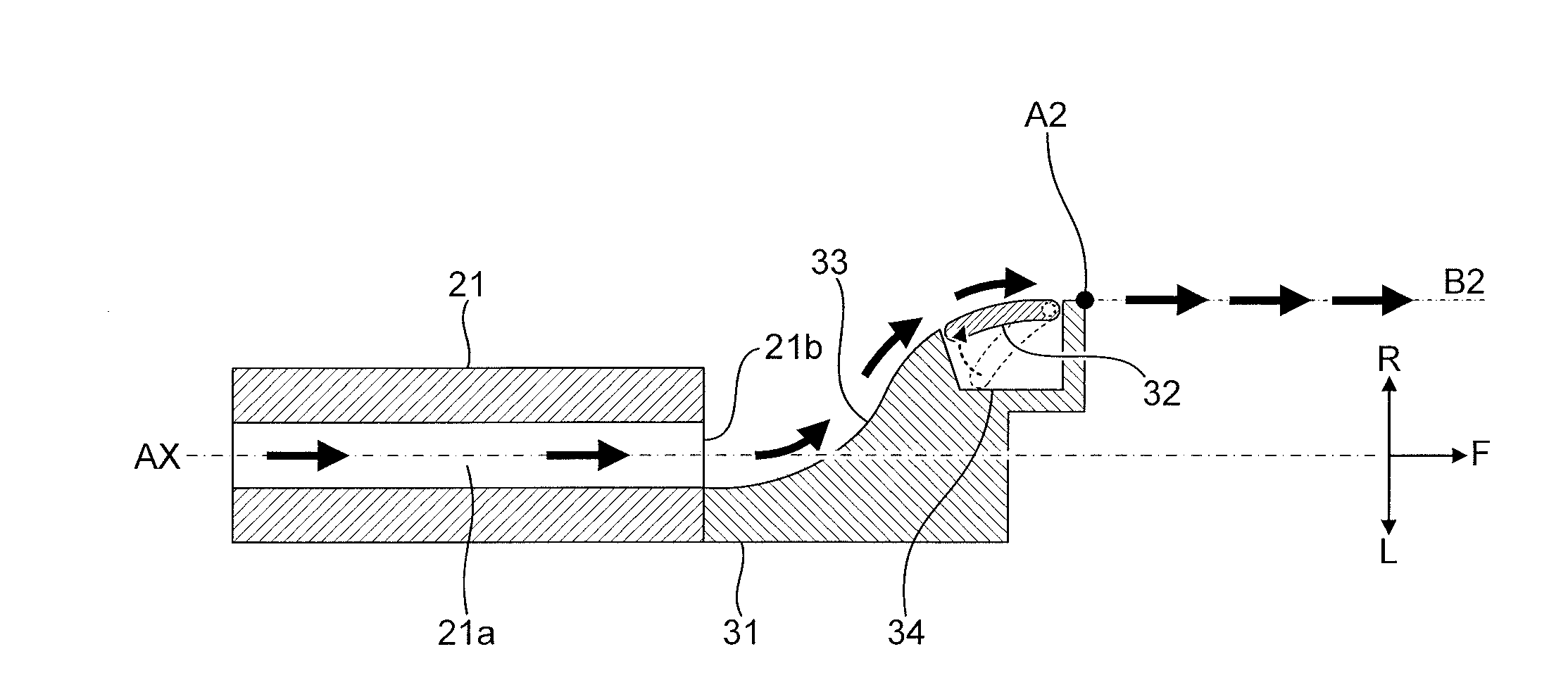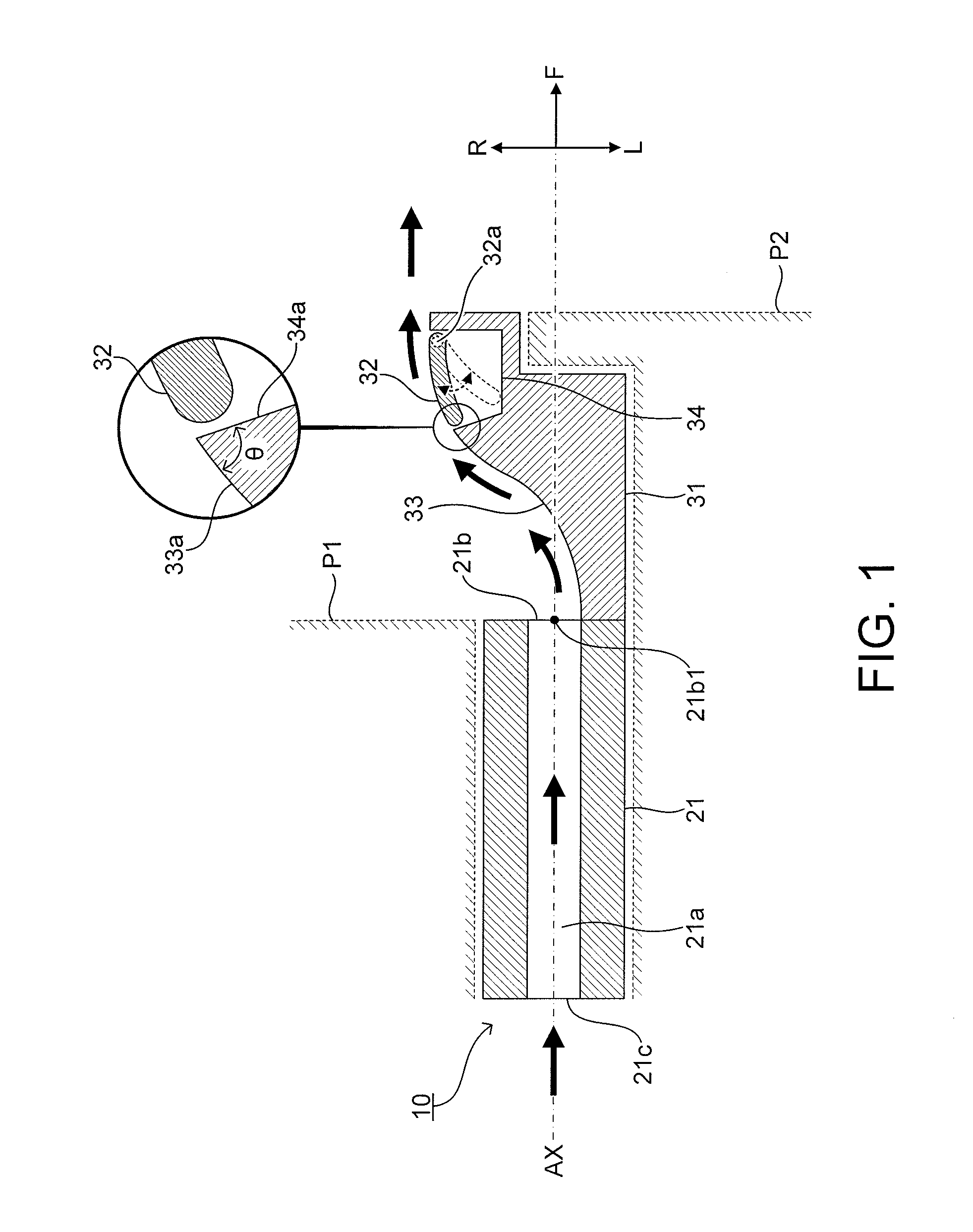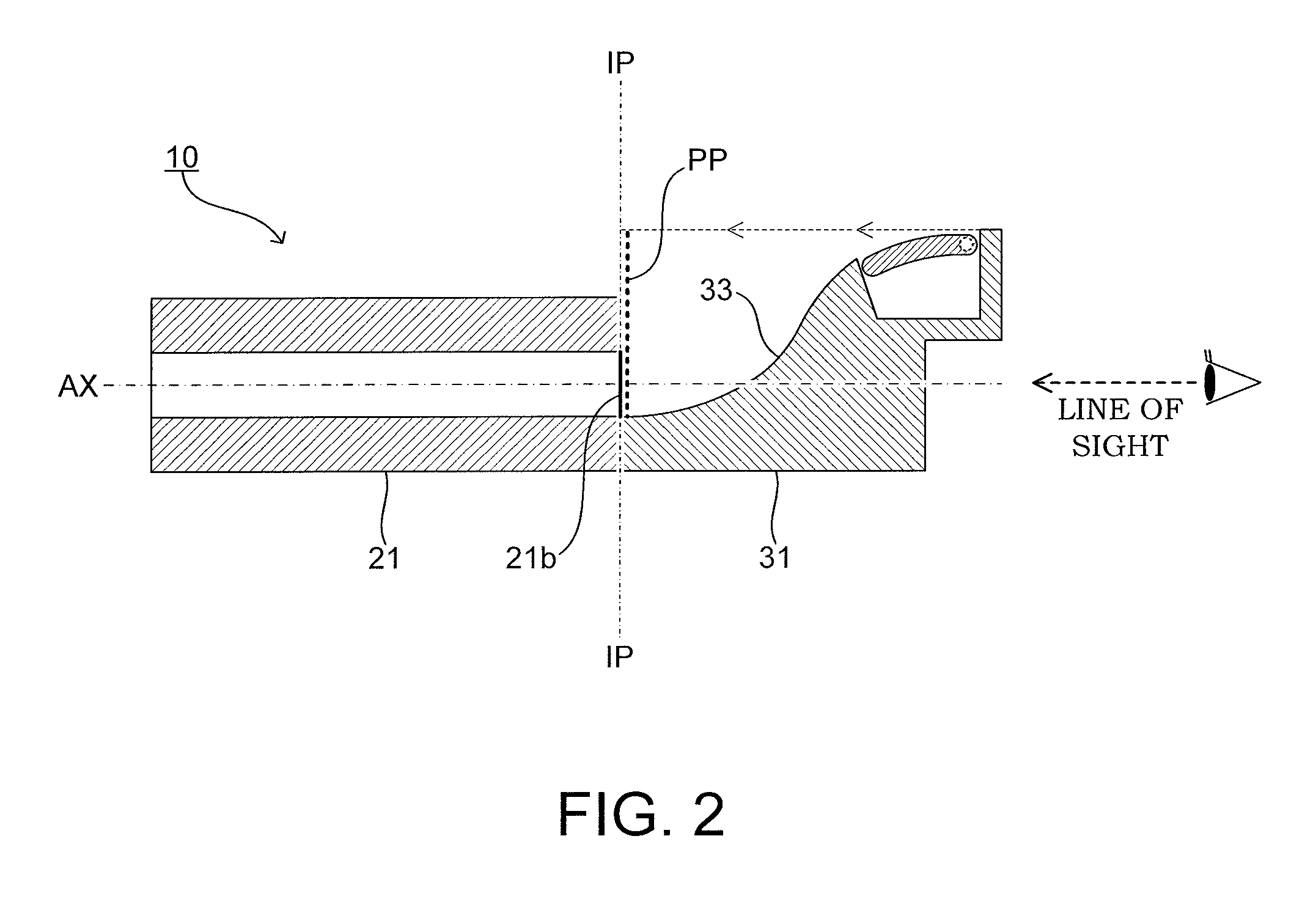Air blowing device
- Summary
- Abstract
- Description
- Claims
- Application Information
AI Technical Summary
Benefits of technology
Problems solved by technology
Method used
Image
Examples
Embodiment Construction
[0037]Now, an air blowing device according to embodiments of the present invention is described referring to the drawings.
[0038]
[0039]FIG. 1 is an illustration of a schematic configuration of an air blowing device 10 according to an embodiment of the present invention (hereinafter referred to as “embodiment device 10”). The embodiment device 10 is installed on an instrument panel of an automobile so as to be interposed between a peripheral component P1 and a peripheral component P2. Note that, in this embodiment, the peripheral component P1 is a housing of the instrument panel, and the peripheral component P2 is an exterior portion of a display of a car navigation system.
[0040]Specifically, the embodiment device 10 includes a hollow columnar portion for allowing an airflow to pass therethrough (tubular body 21 described later), and a shelf-like portion, i.e. a rising portion like a continental slope adjacent to a continental shelf, for allowing the airflow to be guided along a curve...
PUM
 Login to View More
Login to View More Abstract
Description
Claims
Application Information
 Login to View More
Login to View More - R&D
- Intellectual Property
- Life Sciences
- Materials
- Tech Scout
- Unparalleled Data Quality
- Higher Quality Content
- 60% Fewer Hallucinations
Browse by: Latest US Patents, China's latest patents, Technical Efficacy Thesaurus, Application Domain, Technology Topic, Popular Technical Reports.
© 2025 PatSnap. All rights reserved.Legal|Privacy policy|Modern Slavery Act Transparency Statement|Sitemap|About US| Contact US: help@patsnap.com



